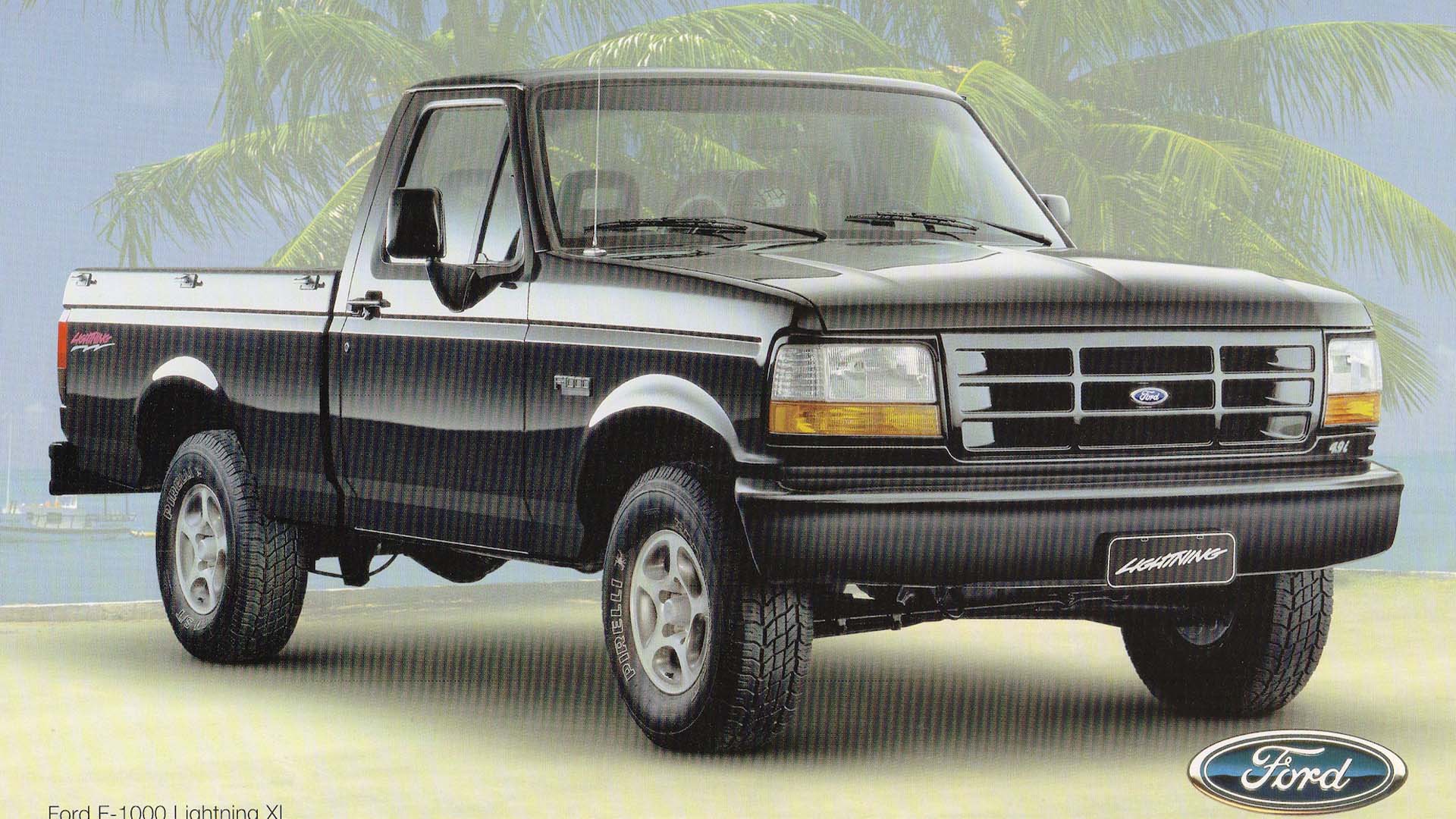

Ford Brazil, rest its soul, did things very differently from Ford here in the United States. It made all manner of peculiar trucks and SUVs, some of them apparently to skirt Brazilian laws on imported and diesel vehicles. Among its less outwardly odd creations, though, was its take on the original Ford SVT Lightning, which it improved with a manual transmission, but also worsened (from a performance standpoint) by selling it with an underpowered inline-six.
The SVT Lightning as we knew it was one of the early great factory sport trucks, with a chassis allegedly co-developed by Formula 1 champion Jackie Stewart, and a high-performance drivetrain. That’s speaking relatively, as its upgraded 351-cubic-inch V8 produced just 240 horsepower and 340 pound-feet of torque, which it sent to the rear axle through a four-speed automatic. Its performance isn’t groundbreaking today, but it helped establish interest in performance trucks across all strata of American society, and paved the way for super-trucks of today like the F-150 Raptor, Ram TRX, and GMC Hummer EV.

Less earth-shaking, however, was the performance of Ford Brazil’s Lightning, which on its arrival for model year 1997 was renamed the F-1000 Lightning XL. This was to capitalize on the introduction of the new ninth-generation F-Series in Brazil, which replaced the recently retired F-100 according to Notícias Automotivas. As the new truck reportedly had a 1,000-kilogram (2,204-pound) payload, it was fittingly christened the F-1000.
Information on the F-1000 Lightning’s makeup is scarce, but its name would seem to indicate it had the same strengthened frame as the SVT Lightning sold in North America. Its powertrain, though, is another story, Ford Brazil having replaced its 5.8-liter V8 with Ford’s workhorse 300-ci (4.9-liter) inline-six. By then, it was already an ancient engine, dating back to the mid-1960s, with little in the way of updates by the time it reached the Brazilian Lightning in the late 1990s.

The version found in the Lightning apparently utilized fuel injection, but to little benefit, with various sources reporting output to be only 146 to 148 horsepower. No torque figure has been recorded, but it’s presumably not much greater than its known output of 260 pound-feet. Power wasn’t the only downgrade from the 351 Windsor, either, as the V8 is said by Ford Muscle Forum posters to weigh in at 518 to 525 pounds, whereas the 300 is said to approach 600 pounds on Ford-Trucks forums.
Despite being built with a five-speed manual instead of the SVT’s four-speed auto, the South American Lightning couldn’t outlast its Northern American counterpart and appears to have been discontinued after 1998 like the SVT. Today, its existence isn’t widely known and often comes as news even to those who consider themselves well-read on the Blue Oval. Those who understand the Ford 300’s hidden potential won’t even find its inclusion damning, while those who wish for more power still can simply call upon another southern-hemisphere Ford six-cylinder for help—it’s practically ready-made for a Barra.
Got a tip or question for the author? You can reach them here: james@thedrive.com